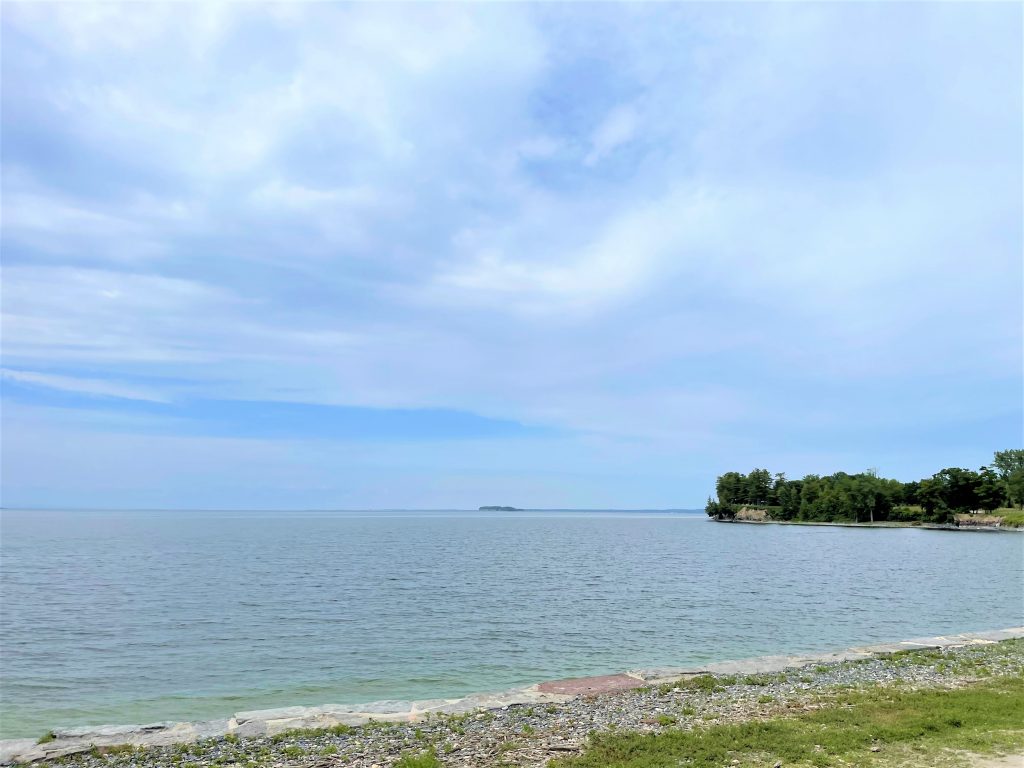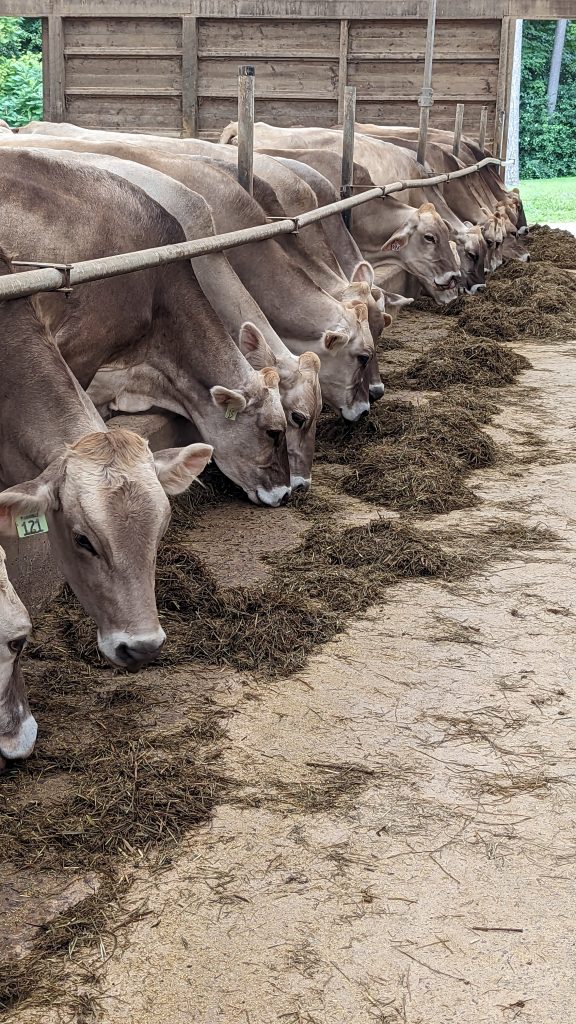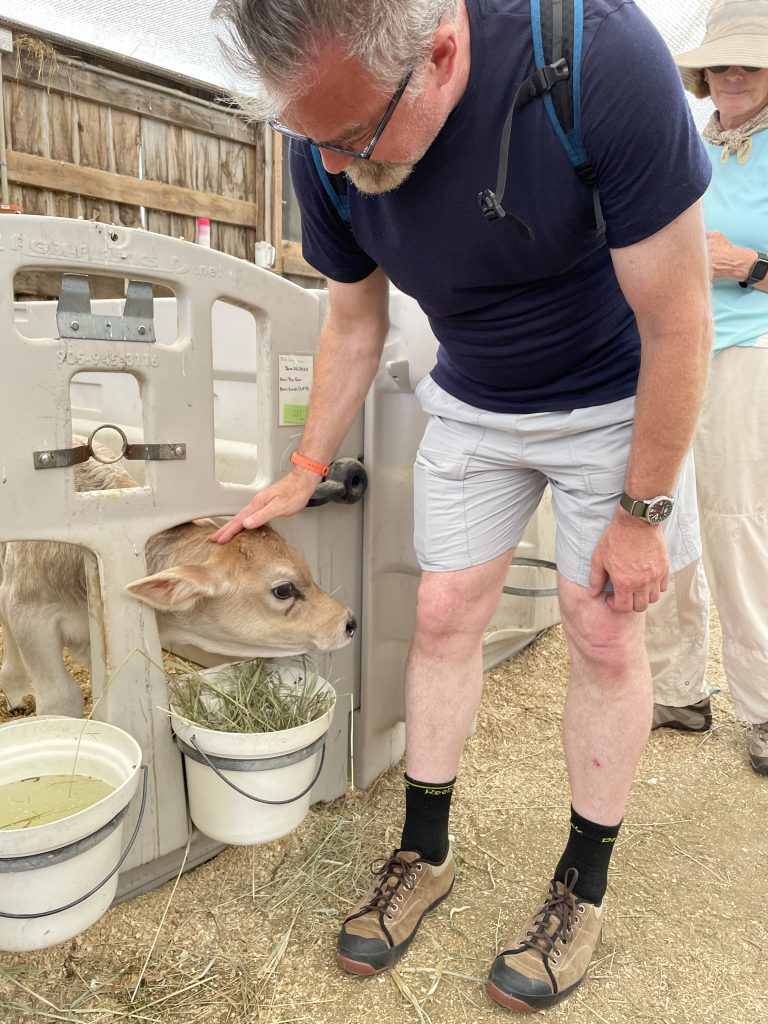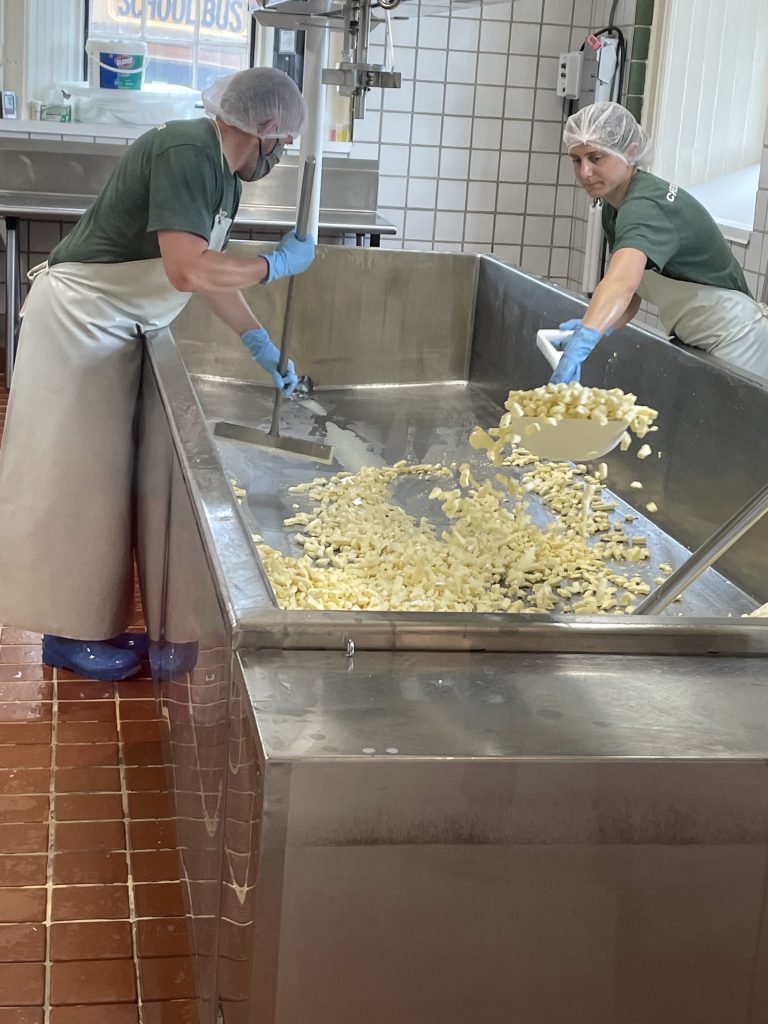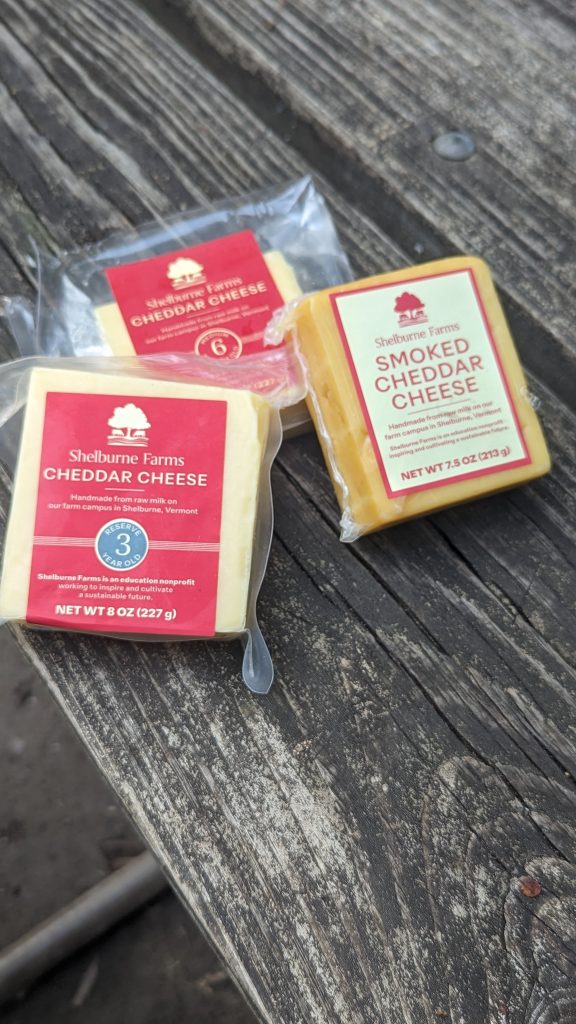Doug and I did a two-hour “Sun to Cheese” tour at Shelburne Farms in Shelburne, Vt. The idea behind the tour is that they show you the process of making their cheddar cheese: growing the food that feeds the cows, milking the cows, and making the cheese.
This involved seeing a good portion of their farm operation and, most importantly, sampling a good amount of cheese.
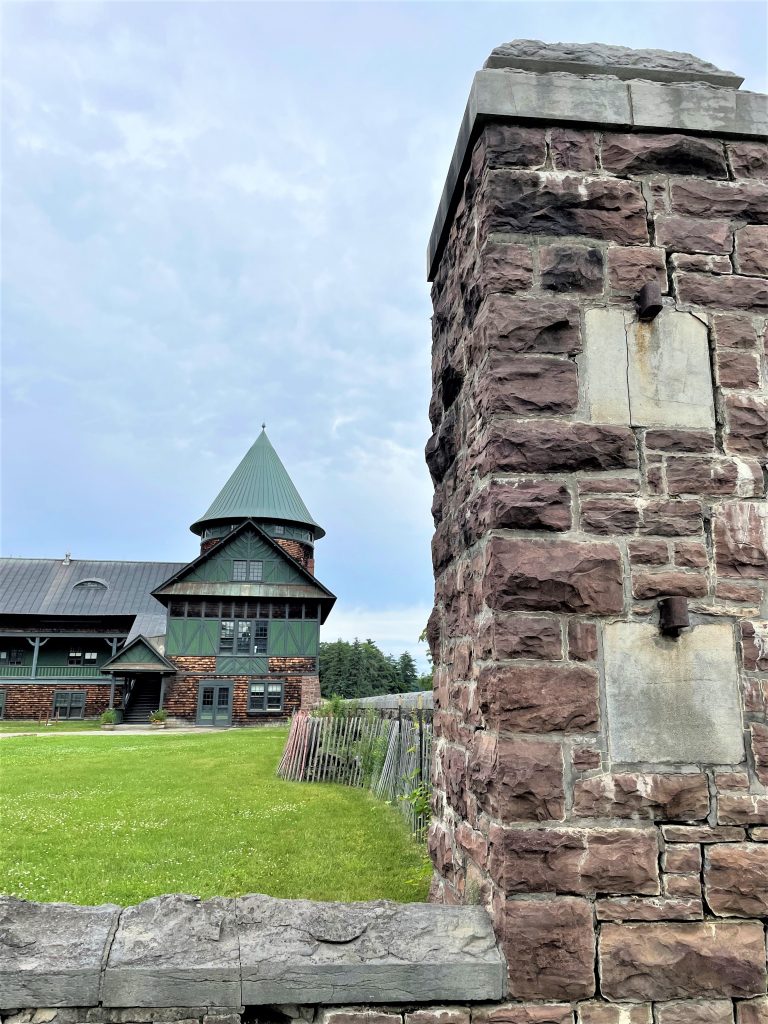
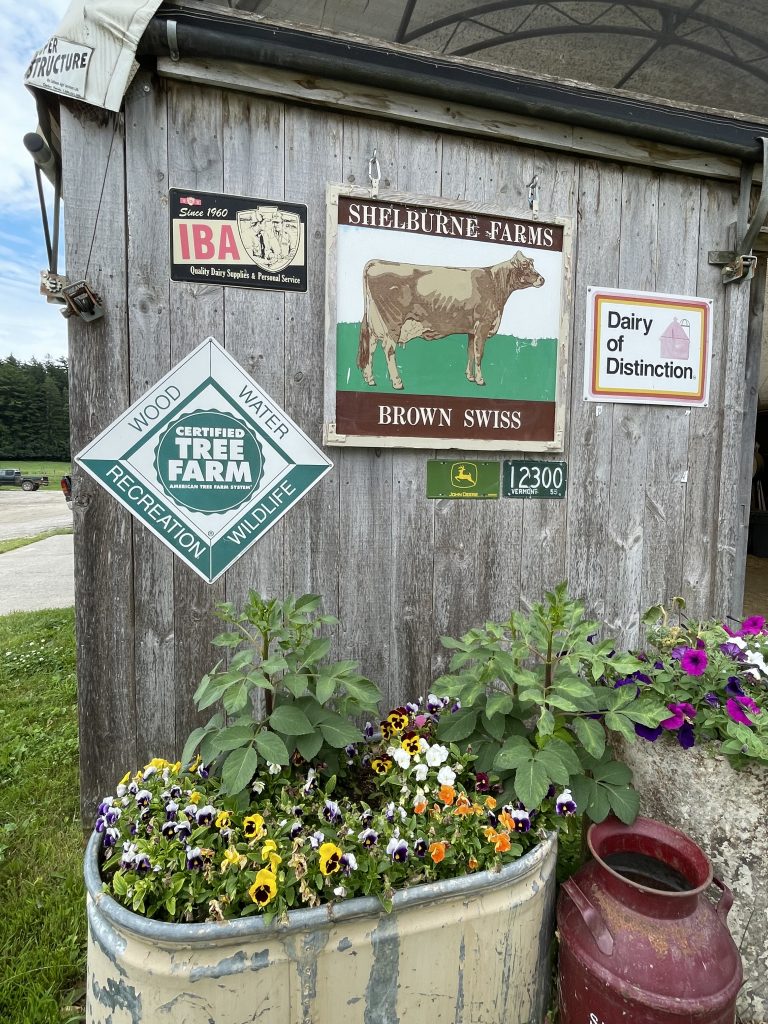

Surprisingly, the farm’s history begins with the Vanderbilts. I don’t know about you, but I have never connected them with farming!
In 1885, Eliza Osgood “Lila” Webb and her husband William Seward used the inheritance from her father, William H. Vanderbilt, to purchase nearly 4,000 acres from 33 farms towards their vision of a grand agricultural estate.
They hired famed landscape architect Frederick Law Olmstead (he of Central Park fame, but so many other places, too) to help consolidate the various farms into one whole, but also lay out pleasure grounds, for what is a farm without pleasant drives and walks for your guests?
The family invested in innovative technologies to enhance production and efficiency in the operations, which included horse-breeding, a dairy, hay and grain crops, and various livestock, not to mention gardens and greenhouses.
Unfortunately, as the 20th century progressed, the realities of the costs of farming against the pleasure of spending inheritances collided, and many of the buildings fell into disrepair and operations were scaled back.
In 1972, the nonprofit Shelburne Farms was formed by descendants of the Webbs, and the property was bequeathed to it in 1986.
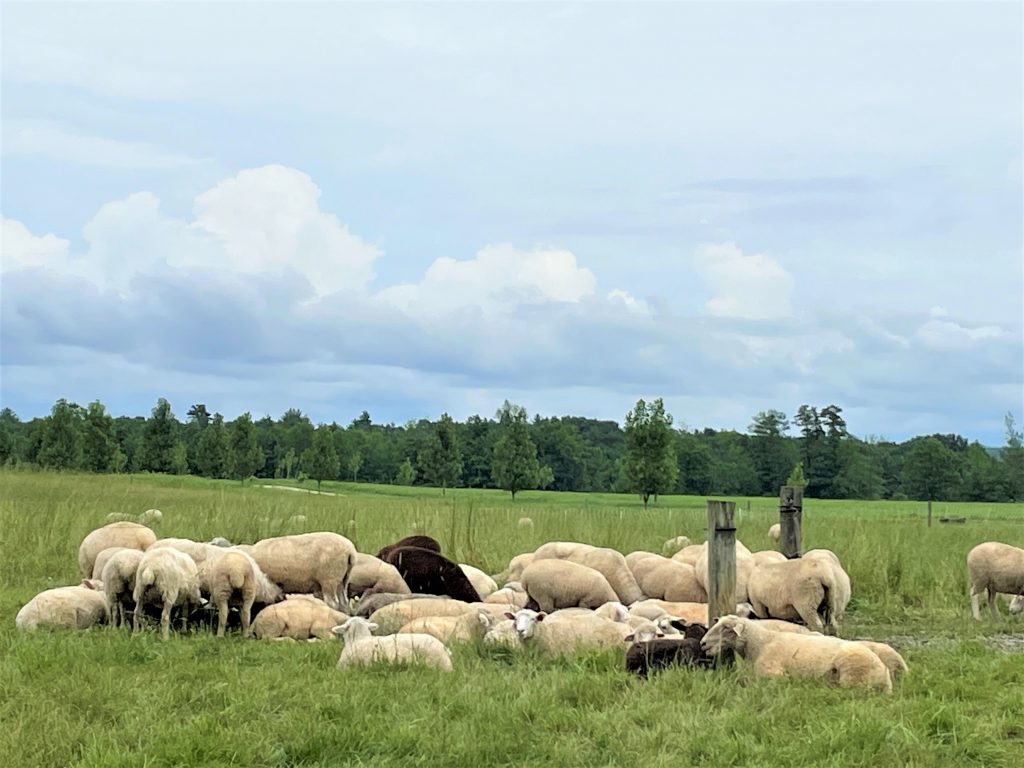
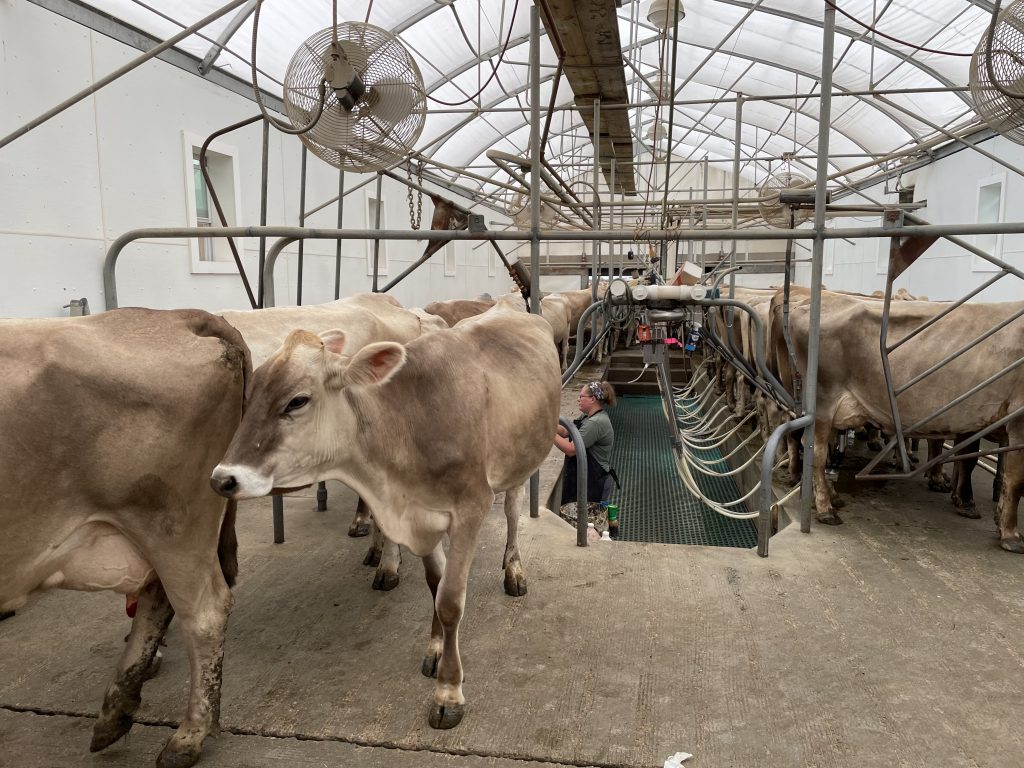
Today the site is an innovative farm set on 1,400 acres, managed with sustainable agricultural processes, has little waste, makes lots of cheese, and hosts many visitors.
The former Webb estate home is now an inn, and the entire organization is committed to education, locally and abroad.
At Shelburne Farms, they raise sheep for wool and meat, tap 2,300 trees to produce maple sugar, operate a bakery producing bread and cookies, manage a herd of 125 cows for milk, have a seven-acre vegetable farm to serve the inn, and receive many tourists who walk the grounds, pet the animals, and spend money on their products. Solar panels generate 100% of their electricity needs.
On our tour, we saw fields in which grass and hay are grown, feeding the sheep and cows. We saw the recently-born cows and got to pet them; the heifers are raised for milk, and the bulls go on to become breeding stock or meat. We saw the cows being milked — each produces about 50 pounds a day, 10 months of the year! We saw the facility where the milk is turned into cheese and watched staff at work.
But the best part, of course, was sampling the cheeses! The cheese were anywhere from a few months to a few years, and one was smoked; all were delicious! Of course this resulted in us buying more cheese than we possibly need.
Later in the tour, we even saw the “sh*t pit.” You can guess what was in that… Amazingly, it had no smell, and the effluent would ultimately be used to fertilize their fields. Thus ends the cycle.
